Hunstanton is a small seaside town on the northwest coast of Norfolk, in England, and home to one of the few west-facing beaches on the east coast of the country where the sun can be seen to set over the sea. The town is fringed along its western edge by a stretch of dramatic cliffs with contrasting colours of orange, red and white sedimentary rocks. These coloured rocks reflect the changing depositional conditions that prevailed towards the end of the Early Cretaceous and the onset of the Late Cretaceous period, 108-99 million years ago. The cliff stretches for 1.5 km from Hunstanton promenade, gently dipping towards the beach at St Edmunds point, which is just over a mile away in Old Hunstanton. The cliff is generally inaccessible, except beneath the lighthouse, where it is possible to examine the exposed strata up close.
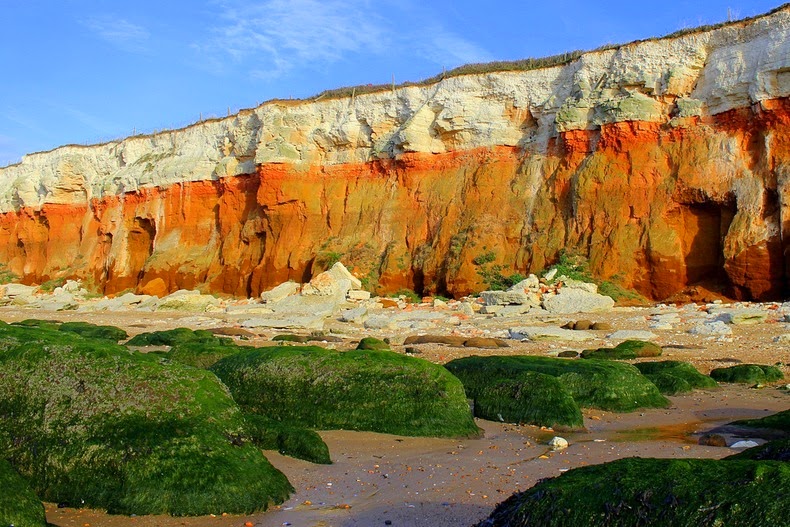
The beach is littered with huge boulders or stones, covered in green moss, that lie in straight lines that defy nature. Walking along the beach, one can see three primary layers of rock exposed in the cliff face. At the top is white Ferriby Chalk; the middle is red chalk called Hunstanton Formation; and the bottom is the deep orange Carstone Formation.
The upper white limestone chalk layer was formed during the upper cretaceous period, when Hunstanton was even sunnier basking in a warm tropical climate. Known as the Ferriby Chalk Formation, this layer is approximately 10 meters thick and largely comprised of the skeletal remains of planktonic algae known as coccolithophores which accumulated to form a white ooze on the seafloor. This soft sediment was later compacted and hardened to form chalk.
The Hunstanton Formation in the middle was formed during the lower cretaceous period over approximately 15 million years. The red colouration of this layer is due to the presence of limonite ore. Macro fossils are common throughout the formation in particular belemnites, brachiopods, echinoids and corals.
The dark orange-brown rock layer at the base is sandstone rich in iron ore, and hence the colour. It has been used widely in buildings around the county. Much of Hunstanton is built from this rock which has been mined at nearby Snettisham for over a thousand years. Fossils are reported within the Carstone and include rolled ammonite fragments, bivalves and traces of burrowing organisms.
Other attractions of the cliff include large colonies of fulmars, a bird which look like seagulls, the 13th century St Edmund's Chapel and a 19th century lighthouse.

The iconic striped cliffs and lighthouse at Old Hunstanton. Photo credit
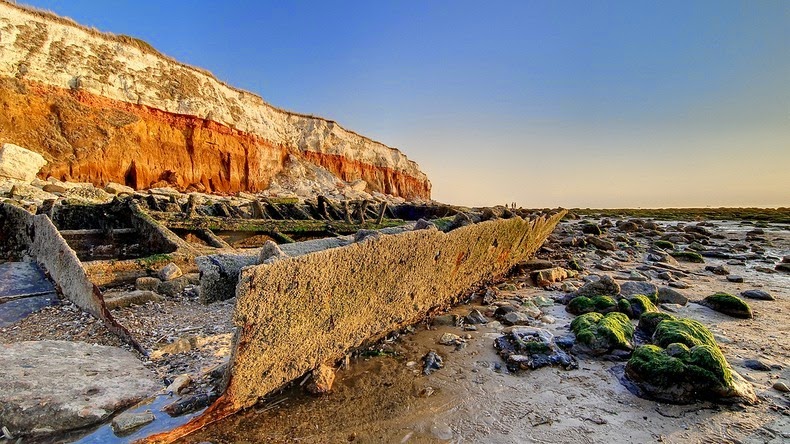
A wreck on the beach at Hunstanton. Photo credit

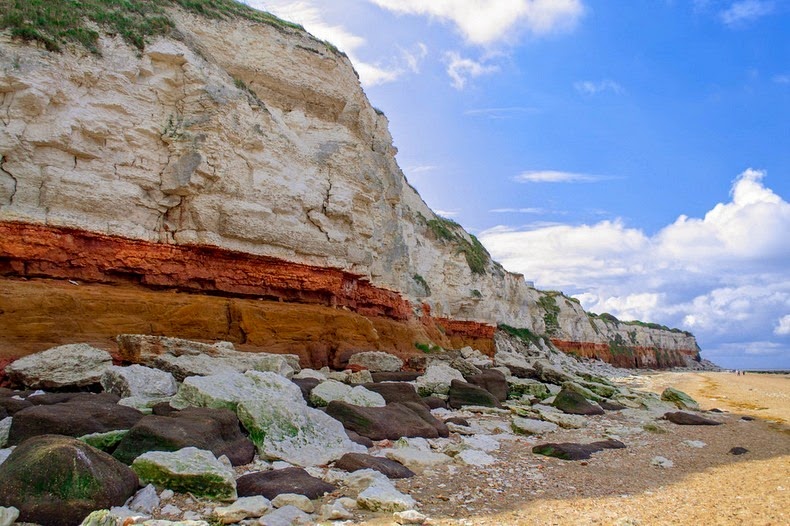
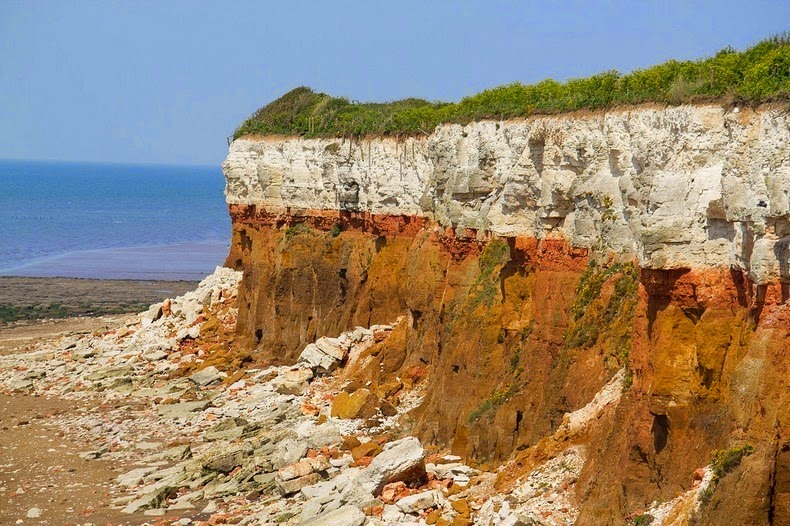

Hunstanton's cliffs have been subject to continual erosion and its estimated that they have retreated by up to 30m since 1885. Photo credit
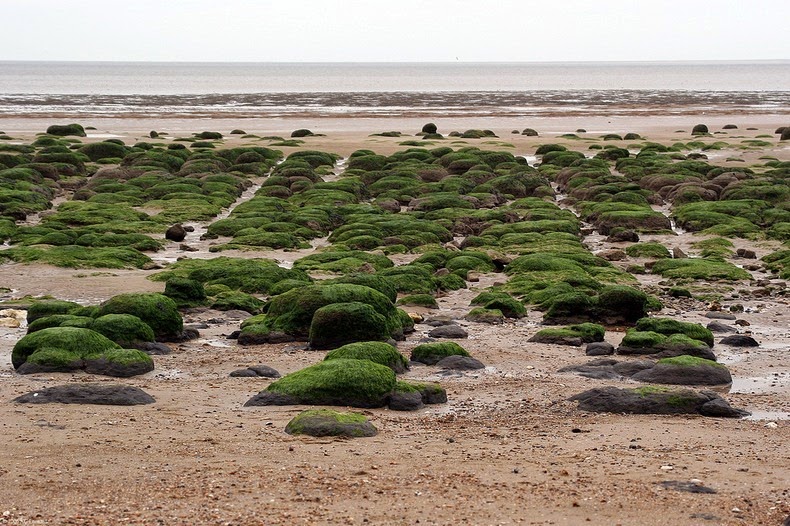
Moss covered boulders laid out in unnaturally straight lines. Photo credit
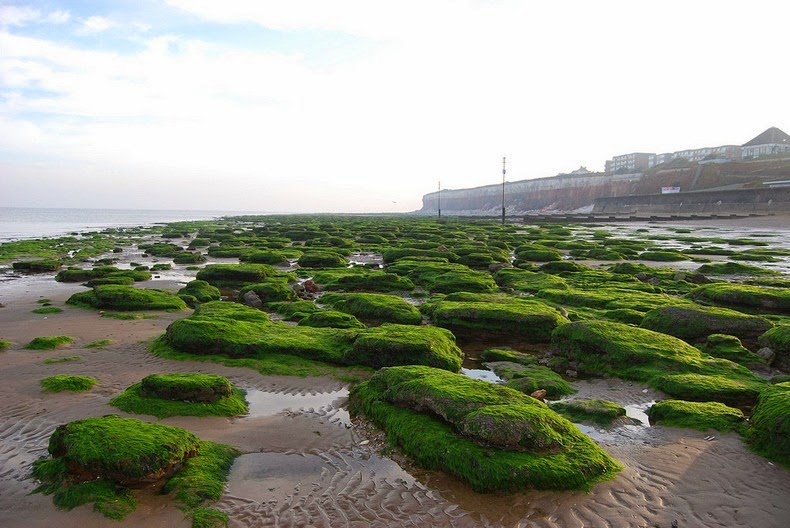
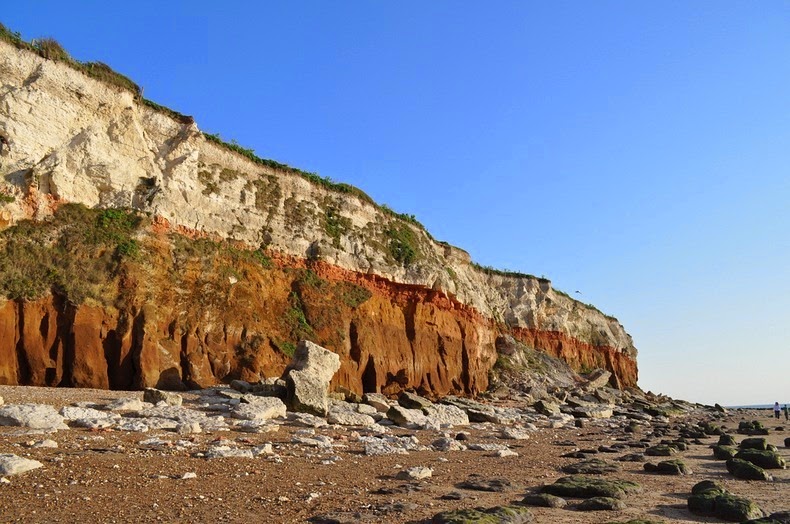
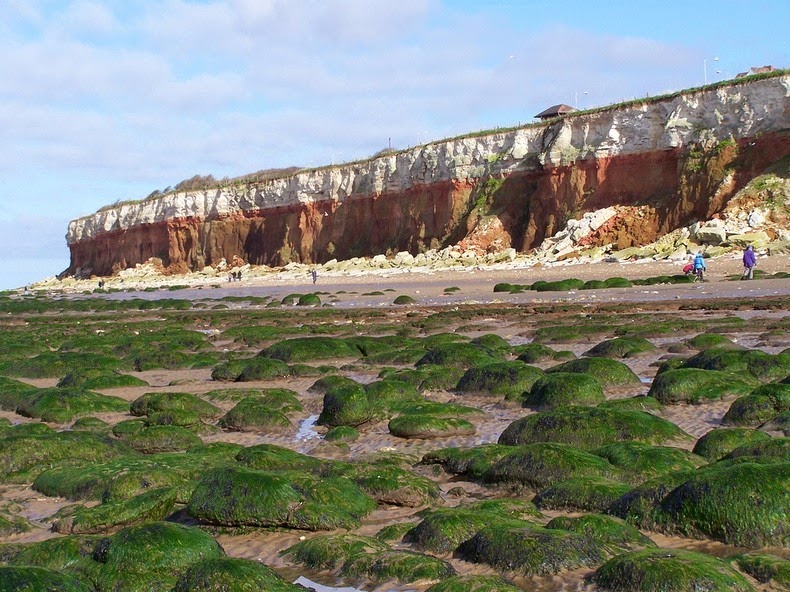
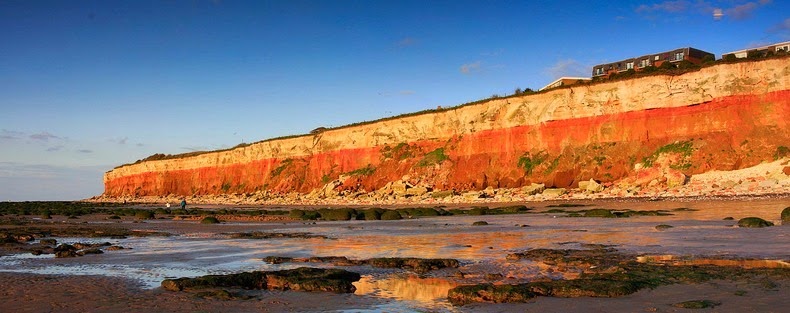
Sources: Discovering Fossils / Geocache / Geological Conservation Review / www.hunstanton-info.com
.



Comments
Post a Comment